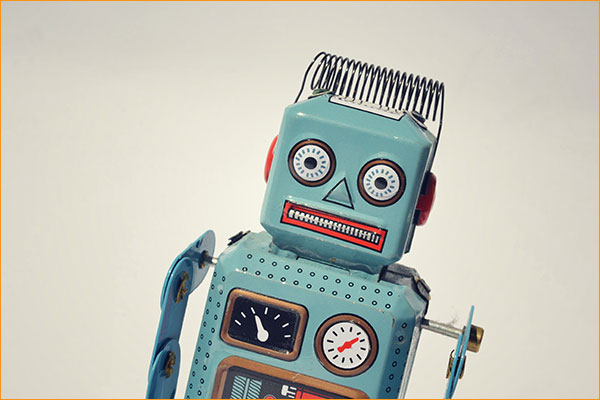
When automation was first introduced to warehousing and supply chain management back in the 1980s, there were dire predictions about jobs being lost to machines. The facts do not support this. It is true that automation and the use of robots in warehousing and supply chain logistics has driven some of the most drudge-like work to robots. However, these job are the most boring, and physically challenging ones that machines clearly do better and more safely. But the robotics industry itself needs engineers, production workers, robotic service technicians, software developers and more. So the evolution that may lead to loss of undesirable jobs is also creating new and better jobs.
Robots don't get tired, bored, or distracted
Since robots have no emotions they do not get bored or distracted. Whether its job is to pick orders, or move orders around from warehousing to shipping it does its work 3 shifts a day, seven days a week. No breaks, vacation time, extensive training, or family leave issues. Robots also work faster than humans, which is of vital importance today as consumers and businesses have grown to expect expeditious fulfillment of shipments. Order today, deliver today is one goal of Amazon. In fact, back in 2012, Amazon bought a startup robotics company and three years later, in time for Christmas 2014, had deployed 15,000 robots in five states with major warehouse and fulfillment centers.
Robots provide great ROI
When automation grew to include robot workers, most robotic solutions were far too expensive for many small and medium-sized businesses. To equip warehousing and supply chain logistic functions with robots cost hundreds of thousands of dollars. Today there are many robotic solutions that are below $50,000. The ROI for a robot is incredible! Say an operation has three shifts, seven days a week. The combined labor and benefits for three order pickers is $72,000 per year. In less than one year the robot pays for itself, and from then on, other than updates and repairs there are no additional costs.
The explosion of items to track, the expectation of immediate fulfillment
And the timing of robotic help could not be better. Online vendors, as well as brick & mortar stores, have seen an explosion of stock keeping units (SKUs) to manage. Just knowing where things are in a warehouse requires a computerized inventory system. In addition, robots can maneuver in tighter spaces than humans, so warehouses can be tightly pack with more goods, allowing for more SKUs.
There are many companies that make robots for use in warehousing. Some custom design robotic solutions for complex logistical problems, but more vendors than ever offer off-the-shelf technology that is quickly programmed to do basic pick and transport functions.
Robot technology works best with other technologies that make tracking items easy, such as barcoding and Radio-Frequency IDentification (RFID) technology using a tag or chip placed on inventory. Barcoding and RFID are more often used without robots for inventory control and tracking, but these technologies are being combined with robotics more commonly every year.
Warehousemen from twenty years ago would not recognize today’s modern warehouse with robots zipping around and technology that directs humans or robots to where items are with pinpoint accuracy.
Contact StayLinked today to find out how you can increase your supply chain efficiencies - with or without robots!


